The Canada-US Border Is Open. Here’s What Crossing By Land Is Like Right Now
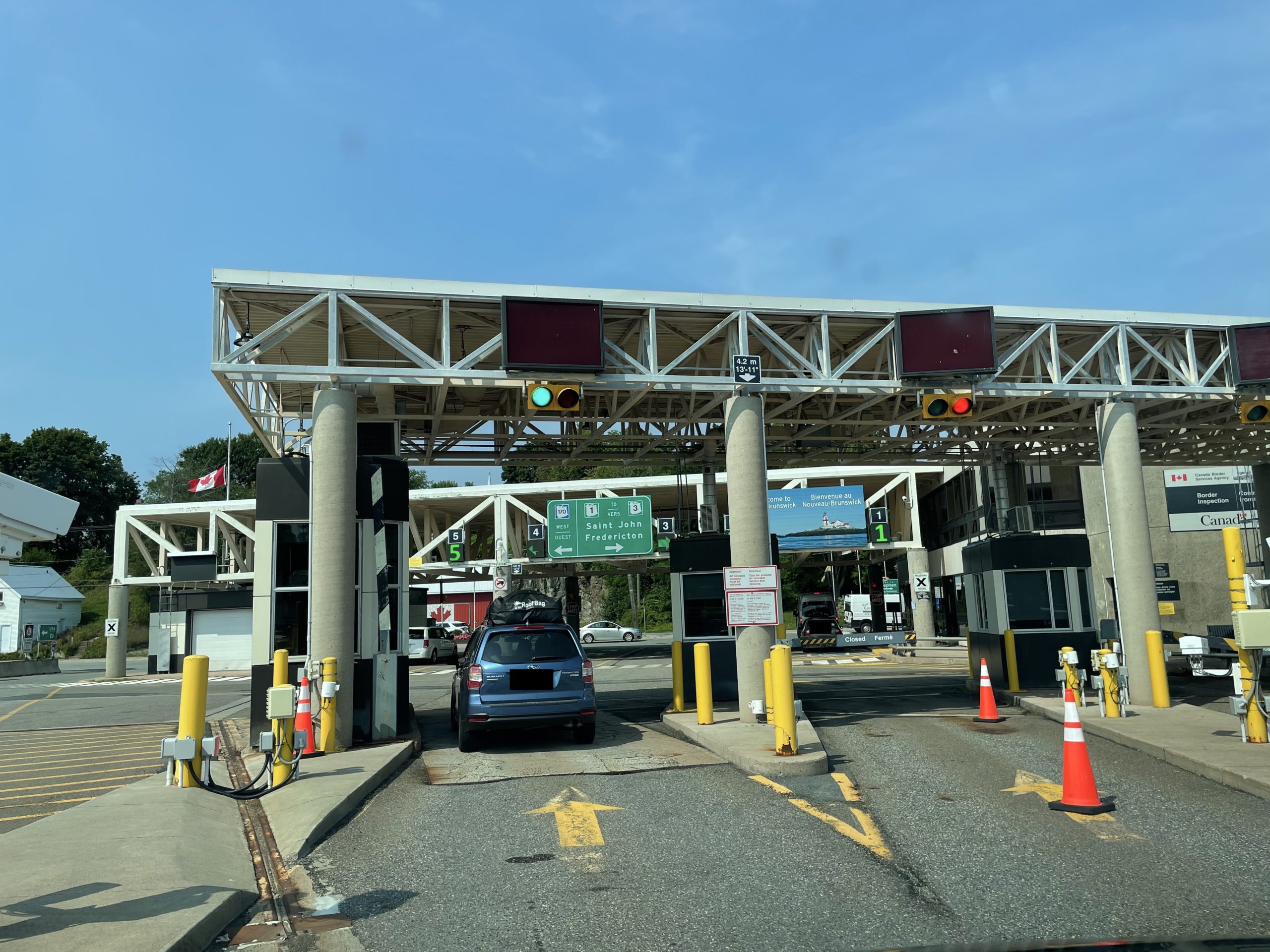
If you’re thinking about crossing the Canadian border, I’ve got plenty of details on what to expect. Our family recently crossed the border into Canada and then back into the US. If you prefer to listen to the story than read it, you can check the whole thing out on my podcast.
If you just want the quick and dirty, here are some key links:
- The ArriveCAN app (you need to complete an online application to enter Canada)
- Nova Scotia pre-arrival application
- Link to order Abbot BinaxNOW tests (rapid test that meets US entry requirements)
- NAVICA app (Apple)(Google) (where you’ll receive your BinaxNOW test results)
- Questions? E-mail me at ed@pizzainmotion
The border between the US and Canada has been closed to leisure travel for quite some time. In early August, that changed, with US citizens allowed to cross the border into Canada for non-essential travel. Due to the rapidly changing rules surrounding international travel, I’ve mostly been sitting on my hands. While I’ve had to resume business travel, we’re holding off on leisure travel by air for our family until our son is eligible for a vaccine.
Still, we have family in Canada and try to visit them at least once a year. I have an aunt in Nova Scotia who I’m very close to we. We share a birthday and she was preparing to celebrate her 90th this August. Her memory has been failing and we haven’t seen her since before the pandemic started. When rumors of the border reopening started swirling, our family started contemplating whether we could make the drive up to celebrate with her.
Our daughter had already started fall sports for school which meant practice every weekday morning. With one excused absence from her coach, we’d have to cover 20 hours of driving to get to our family in Nova Scotia, then a 20 hour drive back. Along the way, we’d have to pass border checks at the Canadian border, the border between New Brunswick and Nova Scotia (twice?) and the US border. Sounds easy, right?
COVID-19 Testing For Crossing The Canadian Border
When I first started researching our trip to Canada, I mistakenly assumed the same test that would get me back into the US would also cover us entering Canada. Canada requires the more accurate PCR tests to enter. This is one of many important steps. Canada does not accept the Abbott BinaxNOW antigen test, nor any other antigen test (most rapid tests I’ve researched are antigen tests).
Under normal circumstances, this wouldn’t concern me. However, time was our enemy on this trip. There are two ways to get a PCR test in my area, and in most areas of the country. Pharmacies such as CVS and Walgreens have the tests available, generally at no charge to you. The catch is that you’ll generally wait a day or two to get your results. I called a few different urgent care facilities in our area as well as my doctor. A PCR test for leisure travel would cost me about $400 per person, likely out-of-pocket. The upside was virtually instant results.
We chose to make an appointment at CVS and take our chances on getting our test results in time. You can find the appointment portal for CVS here and make appointments at Walgreens here. The actual process with CVS was pretty easy. The timing was key, since we needed to have the tests taken within 72 hours of when we planned to cross the border. Our plan was to hit the border no later than Friday morning. I managed to get four appointments across two different local CVS stores around noon on Tuesday. Both locations instructed us to hop in the drive-thru lane at the time of our appointment. I showed up about an hour early and hopped in line (our son’s appointment was at a different CVS not long after mine so I was hoping to get mine done early).
The drive-thru attendant asked for my confirmation and didn’t seem to care that I was an hour early. She put a small kit in the drive-thru drawer and walked me through swabbing my nose and sealing up the swab and test receipt. I only had to put the swab about 1/2 inch up my nose, which was something of a relief after hearing horror stories about the brain teaser some friends had experienced. From there, we would begin waiting and hoping we would have our test results back prior to when we planned to cross the border into Canada.
Paperwork For Entering Canada
OK, so it’s not really paperwork, but there are some digital forms you’ll need to complete to cross the Canadian border. Depending on where in Canada you plan to travel, multiple forms may be required. For our destination of Nova Scotia, we’d be required to complete forms for the Canadian border crossing as well as the provincial border between Nova Scotia and New Brunswick.
For starters, Canada has a very helpful link on their website with detailed information about what’s required to enter the country. The general rule of thumb right now is if you are eligible to get vaccinated you’ll need to be fully vaccinated if you want to avoid a 14-day quarantine. For children between the ages of 12 and 17, you’ll still need to quarantine upon entry. There are exceptions for children under the age of 12 who are not vaccinated. Essentially, if you’re traveling with fully vaccinated parents or guardians, you can travel freely though you are encouraged to avoid large indoor gatherings and other crowds, as well as be subject to self-testing during your visit.
Travelers are required to submit vaccination records prior to crossing the border. Canada has a very efficient app (download link for ArriveCAN here) that accomplishes all of this. For our family of four it took me less than 30 minutes to load all the information in once I collected it. After loading all my information I promptly received a receipt stating that I was cleared for my scheduled border crossing.
NOTE: You don’t need to have your COVID-19 tests to complete the ArriveCAN process but you will need the results when you get to the border. The Canadian COVID-19 travel site clearly states that if you don’t complete the ArriveCAN process prior to hitting the border you may be turned away. It’s an easy process and I can’t think of a reason not to do it before you leave for your trip.
Next up, I needed to apply to enter Nova Scotia. While slightly less efficient than ArriveCAN, Nova Scotia also has a user-friendly website that will process your application prior to arrival. You’ll need to complete the application for each adult traveling in your party, and you can add any children onto one of the adult applications. Once you complete that process you’ll receive another confirmation to print out for your provincial border crossing.
Crossing The Canadian Border By Car
One of the complications of driving across the border under the current regulations is the time component. From the time we took our tests Tuesday afternoon we were on the clock. However, because we live 13 hours from the Canadian border crossing point we planned to traverse, we needed to get on the road before our test results came back. If the results never arrived or if one of us tested positive, we wouldn’t be able to cross the border. Our backup plan if our test results didn’t come back in time was to spend some time in Maine. Needless to say when we left Maine just a few weeks earlier I didn’t expect to be going back so soon.
We left home Wednesday late morning after our daughter got done with practice. By the time the sun had gone to bed we had crossed over into Maine. Ultimately, we would make it as far as Portland that evening. As we laid down to bed after a long day of driving, we knew we could make it to the border with a few more hours of driving. However, we also knew we only had one negative test result back from CVS. We had about 36 hours before our test results would be too old to use, so we fell asleep with a mixture of optimism and nervousness. Much to our surprise we awoke to negative test results for the entire family. We were relieved to put one hurdle behind us.
Side note: It was ridiculously easy to sign up for a CVS account and get alerted as soon as the test results arrived. There’s also a phone number you can call to check on your test results. You’ll find the phone number on our test receipt.
Our plan was to cross at St. Stephen/Calais, which is in Northeast Maine. Since the last time I had driven across the border a couple decades ago, a new border facility had been constructed further up river. We chose the smaller one in the hopes that lines would be shorter, and maybe just a bit of nostalgia for me.
There was only one car in front of us when we arrived, with one lane open. After about a 10-minute wait it was our turn. The agent was mostly quiet though started joking around near the end of the process. He inspected our passports and vaccine cards as well as our test results. I showed him our ArriveCAN confirmation and he replied that he could see it on his system, and that he was comparing the vaccination records to those I uploaded. He also inspected our test results (and might have taken a scan of them) and handed everything back to us. He spent a few minutes reinforcing the guidelines for our unvaccinated son and welcomed us to Canada.
Crossing The Nova Scotia Border
As mentioned earlier, we completed a pre-arrival application to enter Nova Scotia. We were instructed to bring a copy of our approval to the border when we drove across and submit it to the agents there. I also mentioned earlier that it had been a long time since I drove to Canada. I recalled during my childhood that there was a welcome center up on a hill just prior to the border crossing. We had been on the road for a couple of hours after crossing the Canadian border so this seemed to be a good place to stop and stretch out legs. Unfortunately the small welcome center was closed, likely due to the pandemic and lack of travel. All that really left us was the border crossing.
As a child we were never required to stop at the border. Provincial borders were always open for people to cross freely. According to my family, they couldn’t recall any other time that the border was manned by police to clear people wanting to enter Nova Scotia. We weren’t expecting any problems at the border, but the border crossing definitely did not go as expected. We left the welcome center via the exit and followed the signs to the highway that would take us east into Nova Scotia. As I headed up the ramp to the highway I looked over my shoulder for traffic as I began to merge…..and could see the border crossing about 1,000 feet behind me. It was too late to stop at that point as we were already on the highway with no way to turn around. We debated turning around at the next exit but we still had plenty of driving to do that day. While we had no idea what to expect when we would be returning in a couple days time, we decided that we would just explain honestly what happened and let the chips fall where they may. After all, we had a receipt indicating we were approved to enter Nova Scotia.
Oops, Did I Make A(nother) Mistake?
I’m usually really good at researching all the details necessary for a trip. And yet, this trip seemed to be my kryptonite. Despite careful planning, I missed one key detail. I planned to enter Canada and I planned to enter Nova Scotia. I also planned to return to the US. It never occurred to me that we’d need to cross from Nova Scotia back into New Brunswick before entering the US. As I saw the wind farm near the Amherst border crossing I got a pit in my stomach when I realized the error I made. Fortunately, there are no restrictions to enter New Brunswick from Nova Scotia. We sailed down the highway, breezing past the Nova Scotia checkpoint we inadvertently bypassed when we crossed the Nova Scotia border.
Testing To Return to the US
Now that we were across the border we needed to take care of our tests to return to Canada. I had no idea at the time, but it was pointed out to me by one of my podcast listeners after the fact that I was 100% wrong. After researching, it turns out the United States does not require a COVID-19 test if you’re driving across the border. It honestly never occurred to me to research whether land crossings were different than air crossings when it came to COVID-19 testing.
Since we had no idea of that rule at the time, we went ahead and use the Abbott BinaxNOW tests when we woke the morning after we crossed the border. After two long days of driving, nobody had the stamina to stay up late and complete the testing.
You can buy the BinaxNOW test at various places locally like Walgreens, though they are in short supply. I purchased mine through a company called eMed that I learned about from fellow travel blogger Gilbert Ott, who writes God Save the Points. The tests themselves cost $25 apiece, though eMed only sells them in packs of 6 (and currently limits you to one pack per order).
The process is fairly simple. Each individual test directs you to a website where you enter a queue to wait for a live agent via video chat who will instruct you on how to take the test and supervise to make sure it’s completed correctly. I’ve seen reports that the wait time can be brutal, so don’t wait until the last-minute to take your tests. Thankfully, we waited no more than a few seconds each time to connect to an agent. You should still plan on roughly 30 minutes to complete each test. And, since you can only be in the queue on one device (laptop, tablet, etc) per person, you may need to juggle technology or wait until each person completes their test to start the next one.
The agent will instruct you to open the test and show them the QR code as well as your ID. Your ID needs to match the information in your NAVICA profile, which is an app you’ll download (Apple link and Google link) and complete sign-up for prior to opening your test kit. This part of the process is also easy, but make sure you register the names of any individuals exactly as it appears on their passport. There are reports the information needs to match exactly for border crossings.
You’ll use a small bottle of liquid to prime the test, then you swab your nose while the agent watches you and finally insert the swab into the test kit, sealing it with a piece of tape. The agent then starts a 15-minute timer and signs off. Once the timer finishes the agent comes back on the screen and asks you to hold up the test again so they can scan the QR code. I assume they’re also looking at the pink lines (think home pregnancy test) but I can’t swear they did that.
Then, they asked me to tell them how many pink lines I saw, and proclaimed each of us negative or COVID-19. Shortly after that, they sent a message to my NAVICA app confirming the negative test. The app keeps track of how long has passed since you took the test. To enter the US, you need to be tested within 3 days of when you plan to enter the country. Whereas Canada states a 72-hour window the US uses “3 calendar days” as the timeline, which may give you a bit more wiggle room before your tests expire.
Crossing The US Border
We hit the border at St. Stephen/Calais pretty late in the evening. We were the only car when we pulled up and he asked to see our passports. Just like when we crossed the border into Canada, I had our vaccination cards and COVID-19 tests ready to go. The agent asked if we were on vacation. I told him about the family birthday party. He handed me back our passports and said, “Welcome home. Drive safe.” I asked him about our COVID tests.
Side note: as a general rule, when someone like a border official clears you to enter, that’s usually a really good time to just stop asking questions. I’m usually pretty good at that but failed here. Turns out it didn’t matter. His reply, “We don’t care about that crap here.” In retrospect, I now understand why he didn’t care. I guess we looked innocent enough, because he never bothered to ask if we had anything to declare.
The Final Two Pennies
Now that I’ve completed a border crossing during the pandemic I understand how much friction there is for international travel. I’m an experienced traveler and there were plenty of questions along the way I wasn’t sure of, and at least a rule or two I wasn’t even aware of. I wholeheartedly believe that these sorts of changing regulations will continue to dissuade some folks from traveling internationally right now.
I’m honestly still not sure what the right answer is in regards to whether people should be traveling internationally right now. There’s still plenty of risk in regards to catching COVID-19. And there’s also substantial risk of getting stuck somewhere you may not want to.
I feel like it’s getting harder and harder to tell people to wait just a bit longer to start traveling internationally. It’s been so long that we’ve been saying that. But, it’s also worth noting that the Netherlands just added a quarantine requirement for vaccinated Americans. We are definitely not in a normal travel time.
My advice? If you’re going to travel internationally, make sure you have a backup plan. Heck, maybe two. I think there are places where it’s safe to visit right now. But, long plane flights with a mask are no fun. And there’s still risk of getting stuck. Know the rules, budget extra time for pretty much everything and hope for good luck!
Did you enjoy this article? Please share it! There’s plenty of ways to do that below.
You can also follow me on Twitter, Facebook and Instagram.
And, I hope you’ll check out my podcast, Miles To Go. We cover the latest travel news, tips and tricks every week so you can save money while you travel better. From Disney to Dubai, San Francisco to Sydney, American Airlines to WestJet, we’ve got you covered!
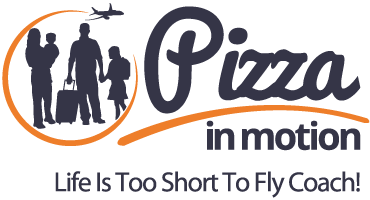

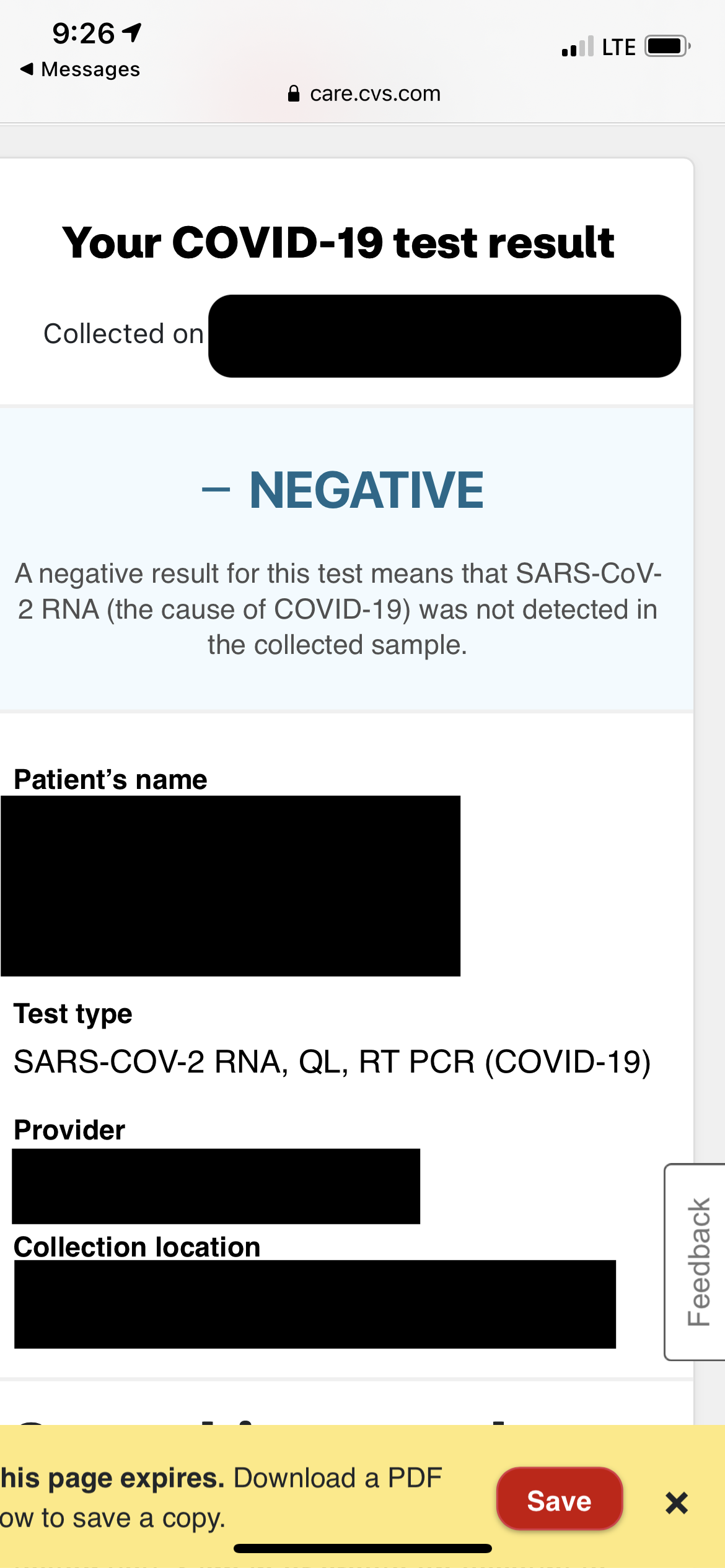
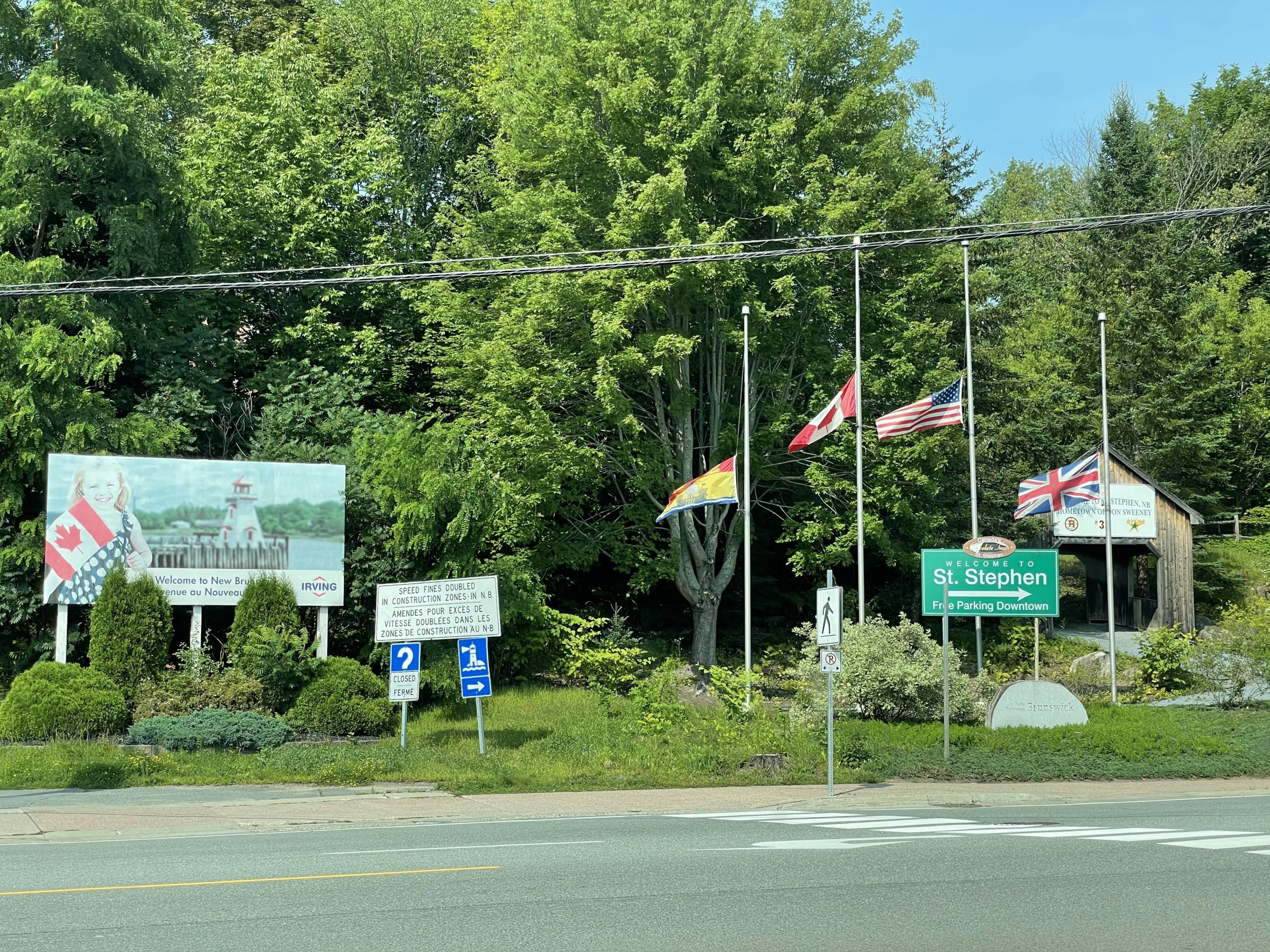
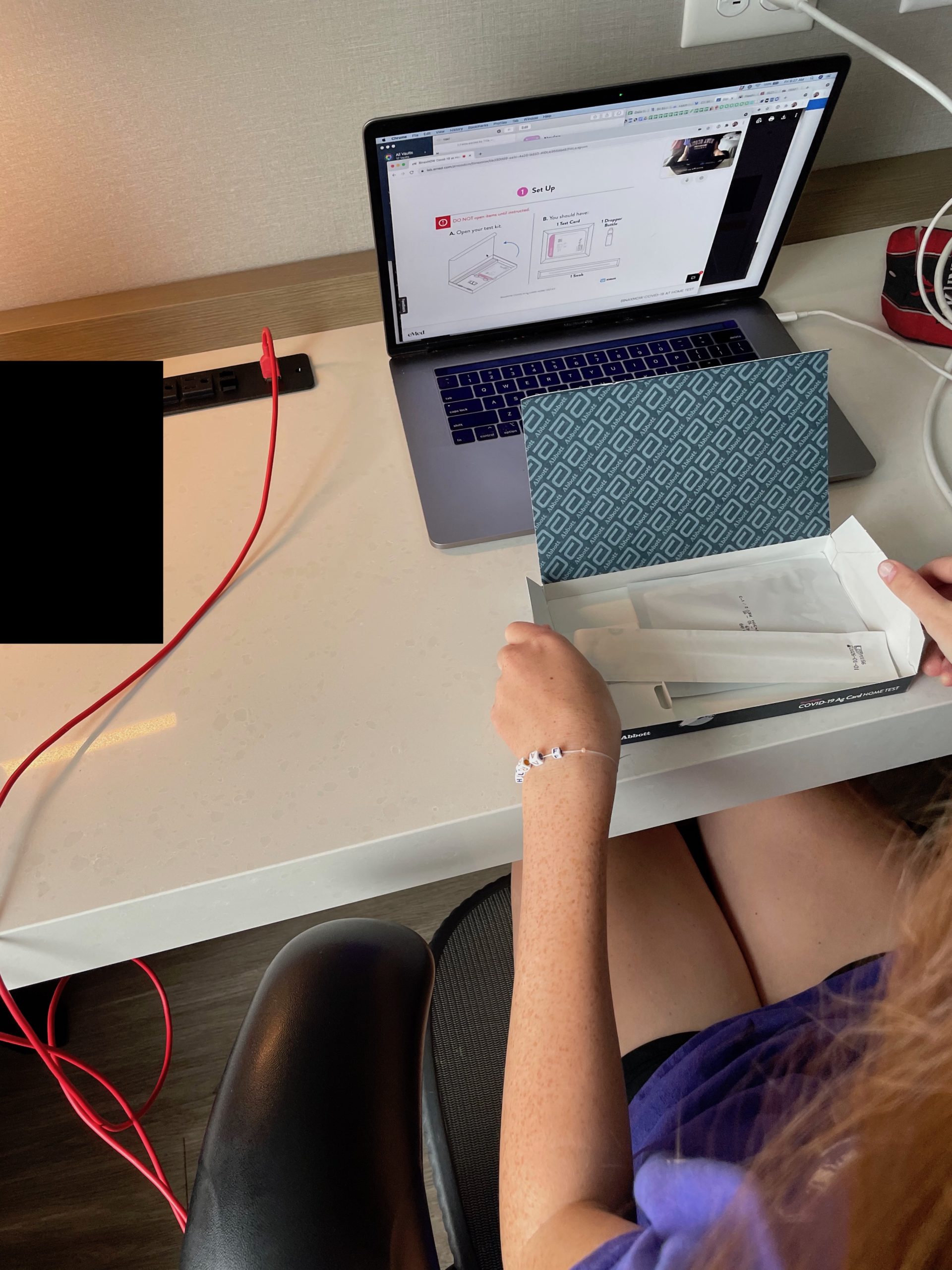
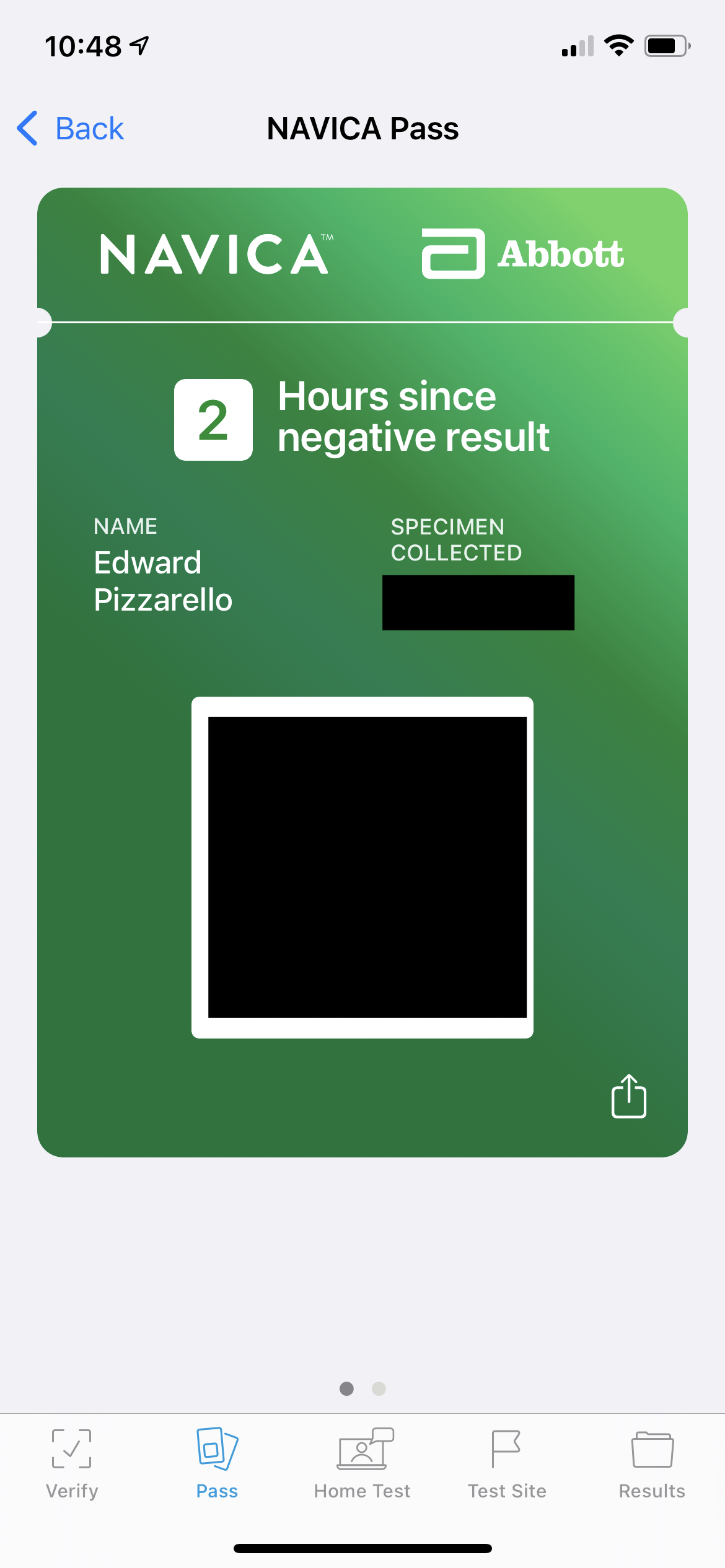
Oye.
Well said. 🙂
This is all absurd.
Anything specific, Chris? 🙂
The entirety of the process. We should just close the border. Including ALL trade until both governments stop with the charade.
Can’t say I agree with stopping trade. If anything, I think we should be working towards a more streamlined process to encourage safe travel.
$400USD for a PCR test? WOW! And here I thought paying $130CAD was too high.
Pricing is pretty brutal other than a free clinic a friend told me about in NYC.
jokes on you, walgreens’ PCR tests are free. only CVS charges for their PCR tests.
CVS PCR tests are free as well. They just take time.
So much misinformation here.
“You can buy the BinaxNOW test at various places locally like Walgreens,” The $23.99 kit sold at walgreens is not eligible for reentry purposes as that is not one that comes with an online-consult from a provider where they verify your identity and observe you. And actually even on the emed website which does sell the right kit, it shows the one sold in stores at walgreens as “not approved.” Not that you need the test for land crossing, the CDC website and state department clearly stated covid testing was required for “AIR TRAVEL” and not land travel.
xyeahtony is right, there are two BinaxNOW tests for sale and only the one labeled “HOME” is acceptable for air travel back into the US. The HOME test is pretty much sold online only (not at local stores), and winds up costing about $180 for 6 tests w/ ~2-day shipping.
You may want to clarify…the land based canada/u.s border is NOT open. The Canada border is. The u.s. remains land based border remains closed to everyone EXCEPT u.s. citizens. Canadians can still enter the u.s., but by air only…I know, it makes no sense
Good clarification.
way too much hassle for a trip. I get why you did it for your aunt, but for the normal tourist, this is a huge disaster. I’ll spend my money where traveling is easy and welcome.
Delta, if not for the specific circumstances with my aunt and the fear we wouldn’t have these moments in the future, there’s no way I do that trip. No way.
As someone itching to travel once more to Canada, this was fascinating as it was helpful. Thanks for sharing your experience.
Jim, thanks for the kind words. I intend to write a few detailed stories about how to do certain things, like take an Abbott test. But, figured this would be good context for folks.
HI Ed, found your blog when searching for answers. I’m an American (dual citizen/Canada) and I live in Canada. I’m planning to cross the land border into Montana in a few weeks. I can’t seem to find the answer to my question…do you know if I need to get a negative Covid test to enter the US by land? I am aware that I will need a negative test to return to Canada. Thanks so much!
Donna,
To cross the US border as a US citizen by land you do NOT need a COVID test.
Hi Ed, brilliant write-up. Thanks for the wealth of information shared:)
Just to confirm – if am planning a road trip to Canadian side of Niagara Falls, Canada requires PCR test before 72 hours. If am planning to return by drive to US side same day or next day, US does not ask for any test. Correct? Please share your inputs. Thanks in advance.
I can confirm that’s correct. 72 hours, PCR test to get into Canada. If driving, no need to test to come back into the US as long as you’re a US citizen.
Thanks so much for the crystal clear and speedy response. Much appreciated! (Posted the question considering travel as US citizen :))